Use nutrient data on some 9000 foods published by the US Department of Agriculture.
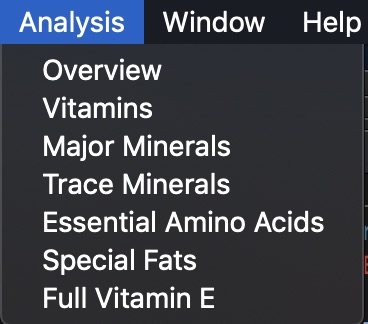
Build a list of foods using mouse clicks, and use that to create a food diary. Analyze portions of the food diary for nutrients. Multiple food diaries can be used. Rapidly try out different diets and foods to see the changes that makes to nutrients.
Find the application on Apple's App Store under Health and Fitness. NutritionDietAnalysis on Apple's App Store It runs on macOS 10.13 and up, including Sequoia.
Build a list of foods using mouse clicks.
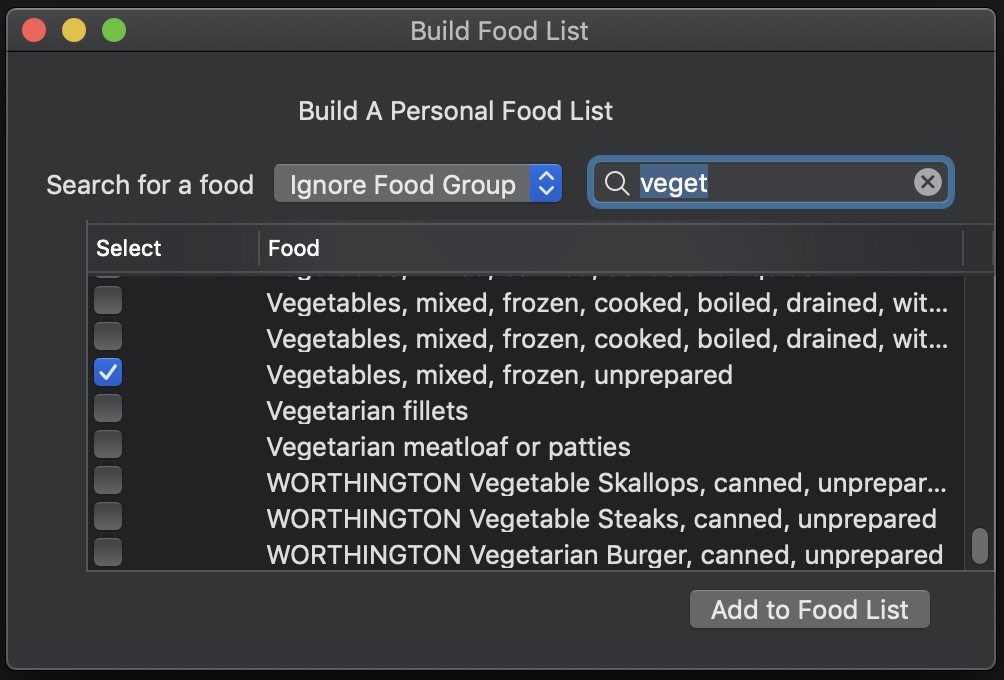
In the Food Diary, create a day and a meal, and drag and drop from the Food List to the meal. Then set the measure and the quantity (which is a percent).
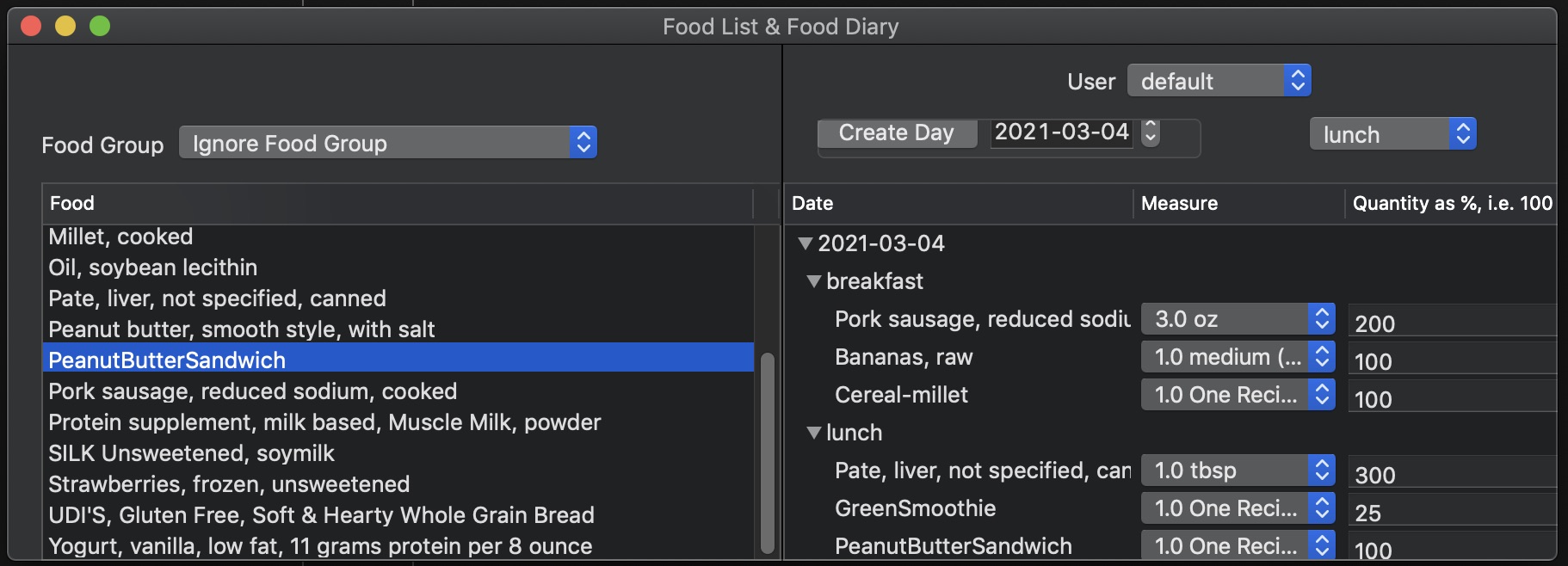
For commonly occurring food combinations one can create a recipe. Here is one for a peanut butter sandwich.
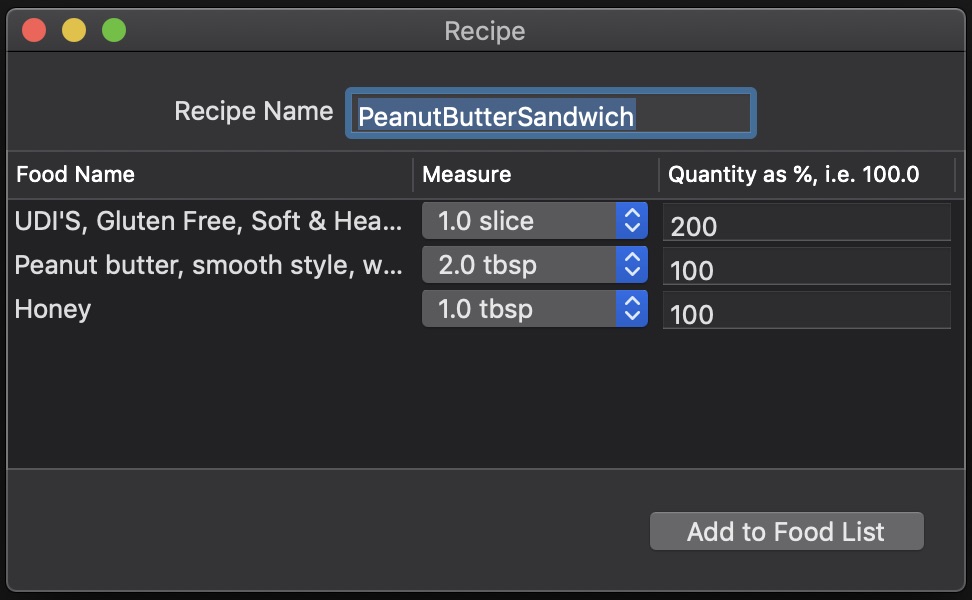
And another for a green smoothie:
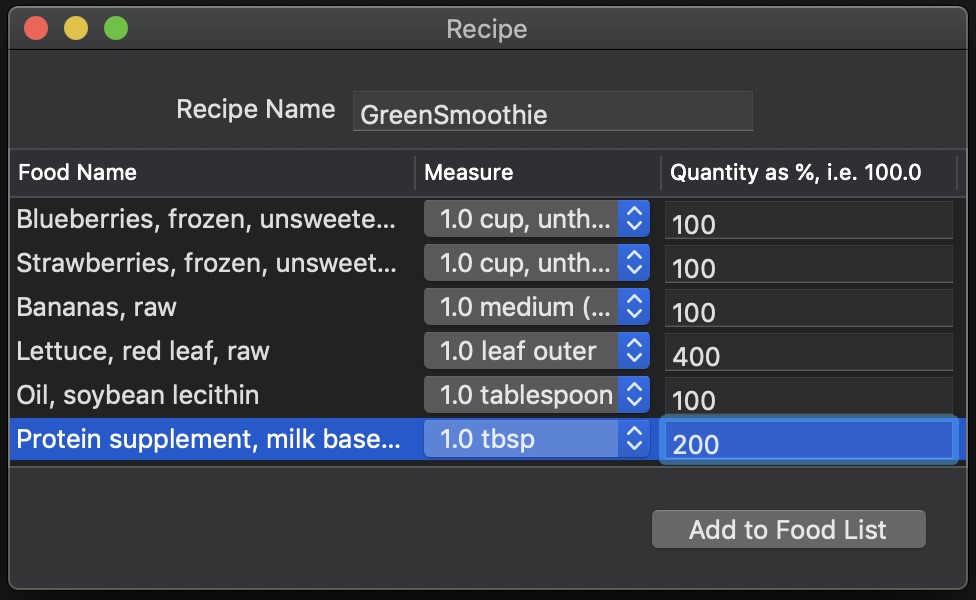
One can analyse the food diary (or a selection of it). Here are two examples:
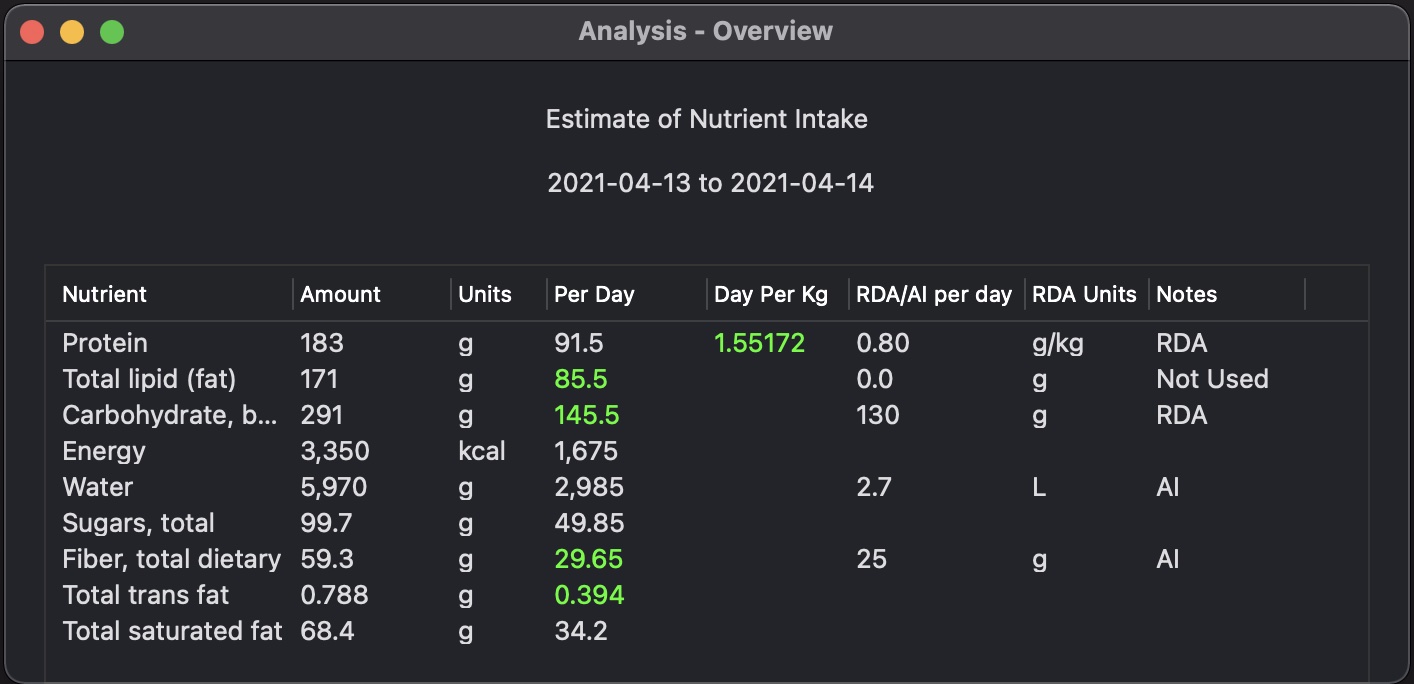

If one is short on some nutrient, one can find foods that are strong on that
nutrient using the Top10 window.
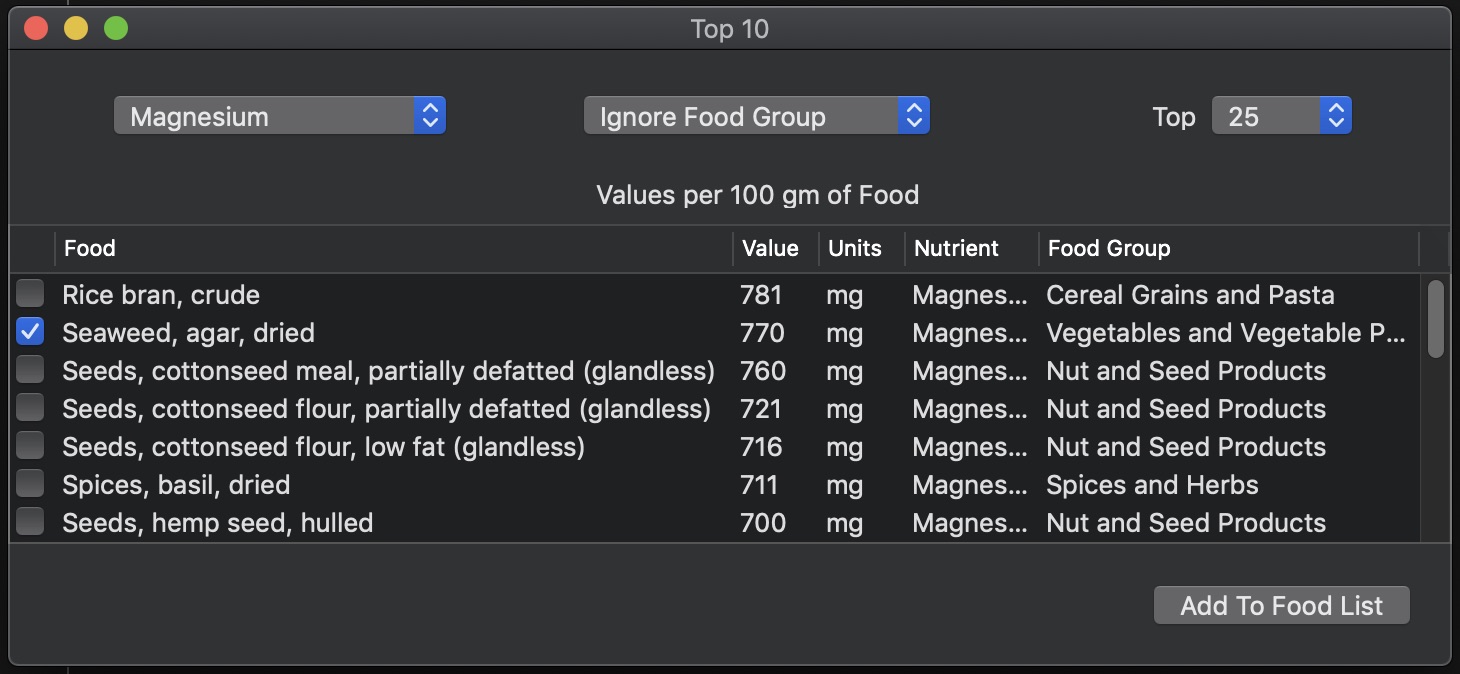
-
What data is the application based on?NutritionDietAnalysis uses a database of almost 9000 foods, published by the U.S. Department of Agriculture (USDA).
-
What user data is needed to calculate RDA/AI ?Bring up the User menu item under the File menu. For the default user modify the attributes so they correspond to the person in question.
-
Why are both RDA and AI used in the Analysis windows?RDA stands for Recommended Daily Allowance. It is used where there is believed to be enough data in the scientific community to understand what human needs are. AI stands for Adequate Intake. This is used where there is some data but not enough to establish an RDA. Note that for some nutrients there is not enough data for either of these.
-
In the Analysis windows, why are some items colored, and some not?Items are colored green if the value per day is at or above the RDA/AI and if the RDA/AI units are the same. Likewise items are colored red if they are below the RDA/AI and the units are the same. If the units are not the same, no color is assigned (except for amino acids).
-
In the Analysis - Overview window, why do the notes for Total Lipid (fat) say "not used"?This item is "not used" by the RDA for adults. It is used for the youngest infants.
-
In the Analysis - Vitamins window, why does vitamin A show in both IU and ug units?In creating the database of measurements for some 9000 foods, early measurements were made in IU. However, later measurement units were changed to ug RAE, and there is not a clean conversion between the two.
-
In the Analysis - Vitamins window, why does vitamin D show in both IU and ug units?Vitamin D (D2 + D3) is in ug. For RDA purposes use "Vitamin D" expressed in IU.
-
In the Recipe window, can one recipe use another recipe?Yes it can. One can do this up to 15 levels deep. However do not structure the recipes so that one recipe uses another which uses the first recipe (directly or indirectly).
-
What are some of the variables in absorption of nutrients?How many nutrients you take in the mouth may not be what you absorb. The amount of stomach acid (a study showed the age 60 to 70 cohort had about 50% with low stomach acid), the amount of digestive enzymes, the amount of bile from the gall bladder, and things like gluten sensitivity, all impact absorption. So do some drugs.
-
Version 1.01Bug Fix: "UserEdit" window now saves.
-
Version 1.02Bug Fix: Three small changes in the "Recipe" window, to prevent crashes in that window.
-
Version 1.03Bug Fix: "UserEdit" window radio button state is now saved. "Users" window now will bring up only one copy of the "UserEdit" window at a time. Database access code was updated.
-
Version 1.04Bug Fix: When relaunching the app, if the finder is set to restore windows, then the Food Diary pane will restore for any selected user, including non-default.
-
Version 1.05The app is now a Universal app, executing native on both Apple Silicon and Intel CPUs. Database access code was updated.